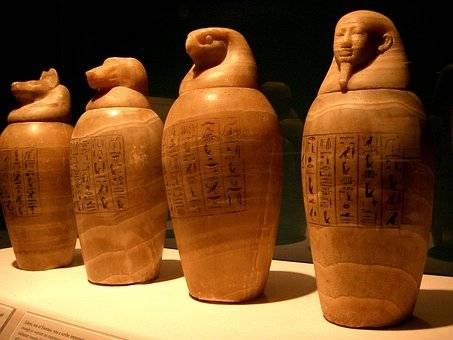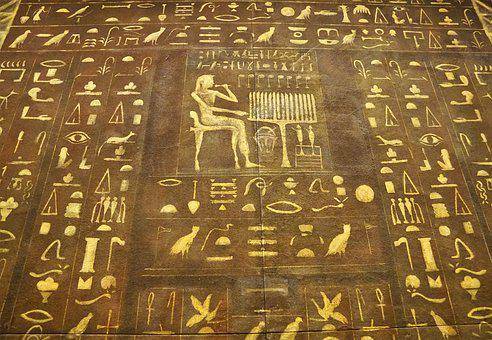The pyramids in Egypt have had their share of secrets for quite a long until archaeologists started digging into the past, connecting dots with the future. What did astonish the world were the mummified bodies of the rulers from the ancient age. And the whole concept of the afterlife the Egyptians believed into. Also known as the ancient Egyptian embalming process, it helped the population preserve an entire human body for centuries.
But people though fascinated, still couldn’t believe in their findings and kept searching for the truth. Seeking answers about the “how” factor? Until 2016, a cemetery site named “Saqqara” underwent detailed excavation by Archaeologists and history enthusiasts. As per reports, the artifacts belong to the 26th dynasty of Egypt, which came to power between 664 BC and 525 BC.
Ancient Egyptian embalming process – Saqqara Workshop Overview
The residues in the “Saqqara” workshop shed new light on the Egyptian embalming steps followed long back. To further astonishment, the archaeologists found the ancient embalmers’ knowledgeable side. The 31 vessels discovered on site do help with a detailed analysis of the substance-based chemical knowledge of the Egyptians, which could preserve human skin. And the best part is these people were unaware of the microorganisms and bacteria that cause a body to decay.

Also, other than offering a detailed description of the embalming process, the ancient Egyptian embalming fluid found in each vessel helped with trade route discovery. Thus indicating possible imports from the Mediterranean area, Asian regimes, and notable regions of the rainforest in Africa. Which marks the very rise of international trade routes existing at such times.
Ancient Egyptian embalming tools and details
Located at a distance in the South from the pyramid of King Unas, the “Saqqara” place does incorporate an evisceration facility of the subterranean type. This multi-use structure is above the ground and connected to the burial spaces (communal).
The parts of the structure
Ibu: It stands as a tent where the dead body is brought to a halt at the beginning. The Egyptians did use plam wine and river Nile’s water to wash the same. Also, they did remove the organs from the body, delaying the process of decomposing.
Wabet: It stands as the place for rites for the mummy, i.e., the location where the purification of the mummies took place.
Burial Chambers: The place where the mummified bodies were kept.
Egyptian embalming jars or vessels found
Historians did find a series of vessels from the place of “wabet” with traces of boiled naturals at the outer surface of the same. The list goes as follows:
- 121 bowls and beakers
- 62 goldfish bowls (red)
- 59 clay beakers (marl)
- The beakers/bowls did carry Demotic and Hieratic texts with instructions for embalming in them or the name of the substances.
Outside the “wabet,” historians found nine beakers and twenty red bowls with clear names of the substances written on them. To create a link between the bowls found within the “wabet” and outside, historians did take four samples from the burial chambers:
- Faience cup (one)
- Red bowls (two)
- Red cylindrical vessel (one)
Substances in the vessel
On testing, the historians did find a great many residues of different substances within the vessels. This marks the complex use of the same for multiple purposes. Here is a list of the senses in discovery:
- Pistacia resin did cover the surface of the vessel.
- While the sample on the inner walls of the same comprises cedar tar, cypress/juniper, and beeswax mixed with dammar, bitumen/animal fat.
- The Fiaence cup did come loaded with a cake-like material made of oil/tar of cedar, heated Pistacia, animal fat, and beeswax (heated).
- Last, the vessel, cylindrical in shape, did consist of tar/oil of Cedar and Juniper/Cypress, besides bitumen and another unnamed oil/fat.
Apart from bitumen and dammar, all the other substances are similar between the vessels identified in the embalming chambers “wabet” and outside.
Use of the substances
As per research, the embalmers did use the substances because of their biochemical properties in them. And here is a detailed substance-wise segregation of those.
- Anti-fungal, odoriferous, and anti-bacterial properties: Elemi, Pistacia resin, bitumen, dammar, oils, and beeswax did have the same. And the primary use lies in the preservation of human tissues and the reduction of unpleasant smells.
- Healing properties and moisturization of the skin: Plant oil, Animal fat, and beeswax did help with the healing techniques of the various body parts. The same also did work as an ointment to moisturize the skin.
- Skin pore sealing abilities: The adhesive & hydrophobic properties of the resin, tars, beeswax, and bitumen did help with the sealing of skin pores and exclusion of moisture.
The Egyptians did bring changes in the appearance and color of these products.
Ancient Egyptian embalming and mummification process
The “Saqqara” workshop did contain specific instructions about the treatment of various body parts. And the treatment process did include them to prepare and apply several mixtures. Let’s help you learn about the treatment process in detail:
Instructions processed
Eight vessels do have clear instructions for the treatment of the head. The embalmers did use three types of mixtures for the same, including substances like Pistacia resin, elemi, beeswax, cedar, and a plant-based oil. The historians did find the use of tar oil from Juniper and Cypress for the treatment of the head for the first time in the “Saqqara” workshop. And also found in early studies, Beeswax and by-products from Pinaceae did have use for other body parts.
Residues extracted
Next, the archaeologists did extract residues from the next eight vessels, having labels required to prepare the bandages of mummy linen. Seven vessels had organic content, and one had only plant oil/animal fat. Also, two of the group’s vessels did have a heating mark for the elemi resin mixed with oil or fat. This formulation is unique to the “Saqqara” site and was not found before. Moreover, earlier excavations did indicate the use of beeswax and bitumen in balm, but the same was never used in the mummification process in “Saqqara.” The historians found new substances instead – juniper/cypress and elemi.
Reading on bowls
There were six other sherds with information about substances to be used to wash the body, soften the skin, reduce odor, treat the liver, and take care of the stomach. Here is how the labels on the bowl read:
- To wash: The vessel did include conifer tar or oil.
- To make a pleasant odor: Had remainings of animal fat (ruminant) and Burseraceae resin in a degraded form.
- To treat the skin: It did contain a mix of animal fat (ruminant) along with beeswax in the heated form.
Additional facts – Ancient Egyptian embalming process
Also, two vessels had names of Egyptian Gods:
- Imseti: Known for protecting the liver. The vessel did contain a mix of juniper tar/cypress along with elemi.
- The other had beeswax only in the heated form.
Last, there was a bowl dedicated to the administrator of the workshop and the seal bearer, who organized the entire embalming process. The vessel did comprise fat/oil/tar of cypress/juniper, which is the same as the one used to wrap the head.
“Saqqara” site – Unique facts about international trade

- Most of the content found within the “Saqqara” site came from trade. Thus proving the prevalence of exchange and trading practices involved in the embalming process.
- The Bitumen came from the Dead Sea. While the Pistacia trees with high-quality resin, olive trees, juniper, cedar, and cypress were not from Egypt. They were found in various locations of the Mediterranean basin.
- Other essential by-products came from the Levant.
- The unique feature of the “Saqqara” site is that the substances found here offer detailed insight into the long-distance trade route through the Mediterranean channel. The main item pinpointing the same is the resin, a special find of the rainforest in Africa.
Dammar was exclusive to the tropical forests in the Asian region.
The findings in the “Saqqara” establishment did shed new light on the entire way Egyptians did preserve the body of the dead. It also did highlight various facts of the past and how trade routes were. Most astonishingly, the world came to know about the deep knowledge of the Egyptian embalmers at that age, where they were much ahead of their time.



